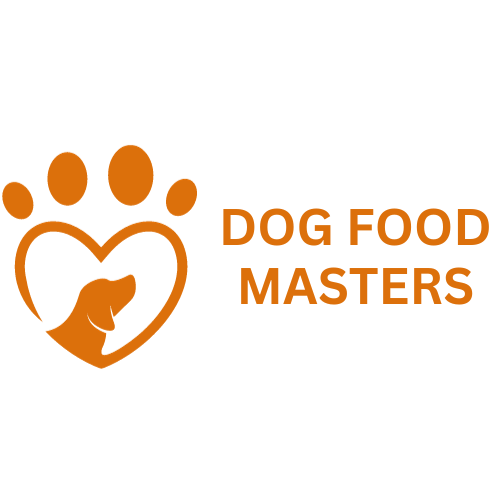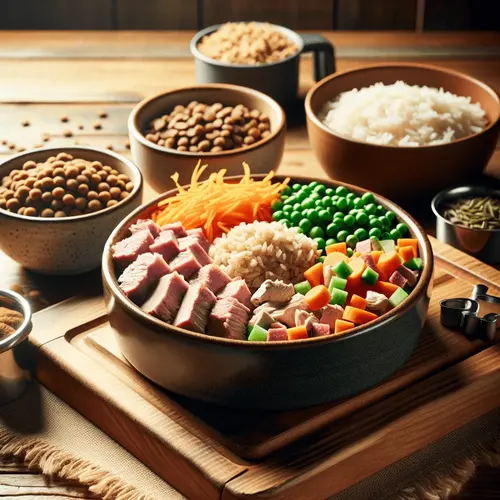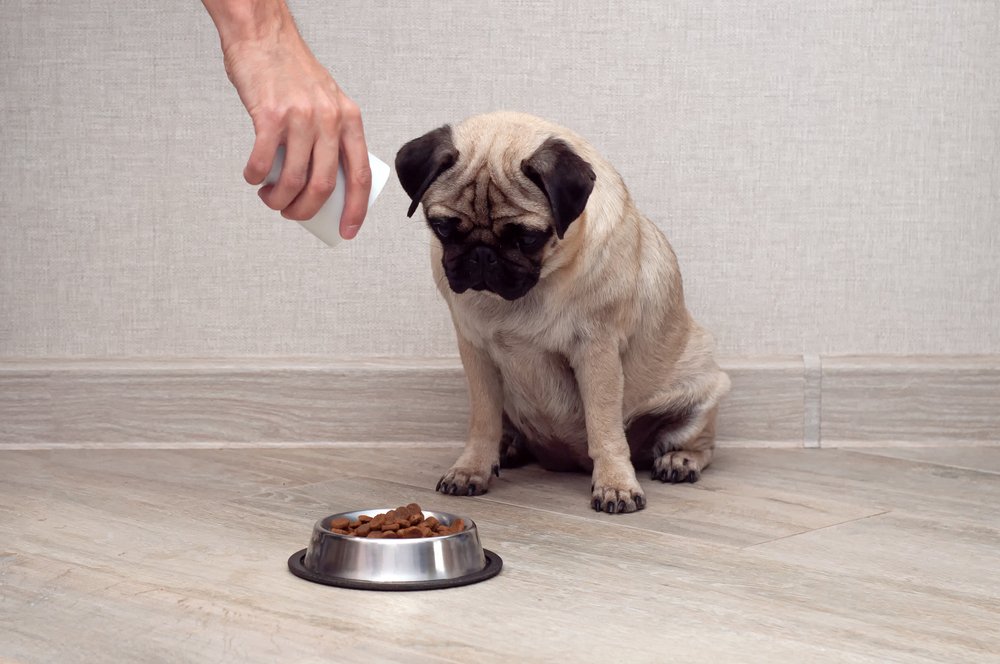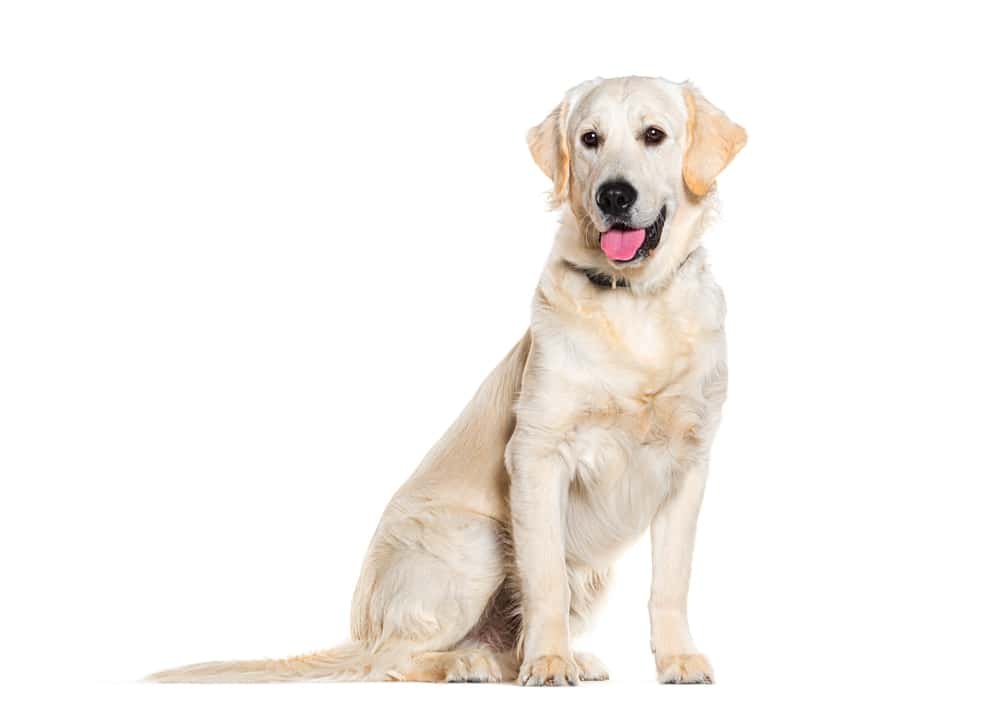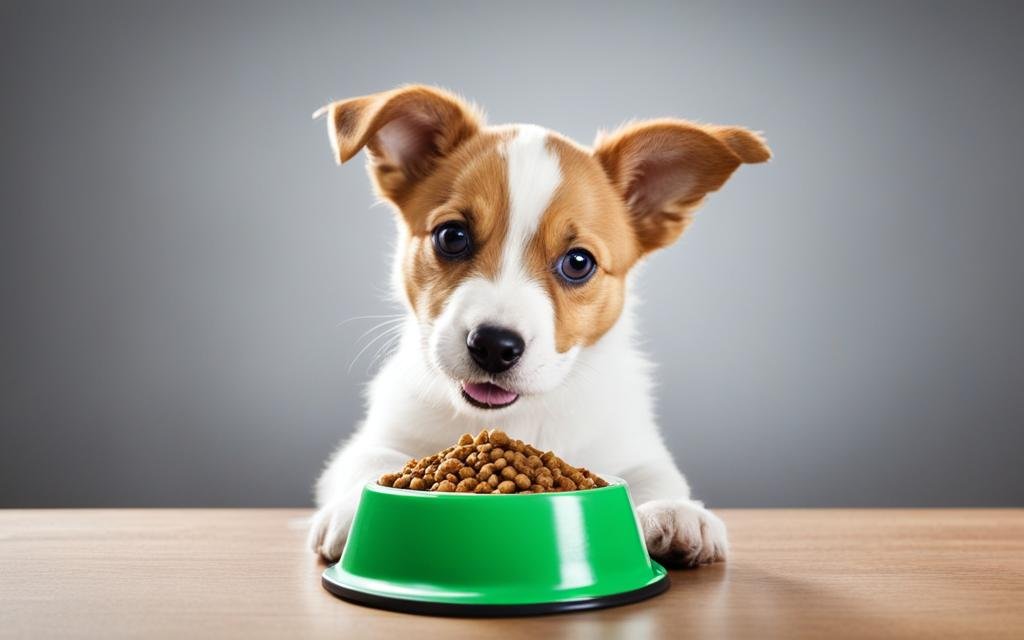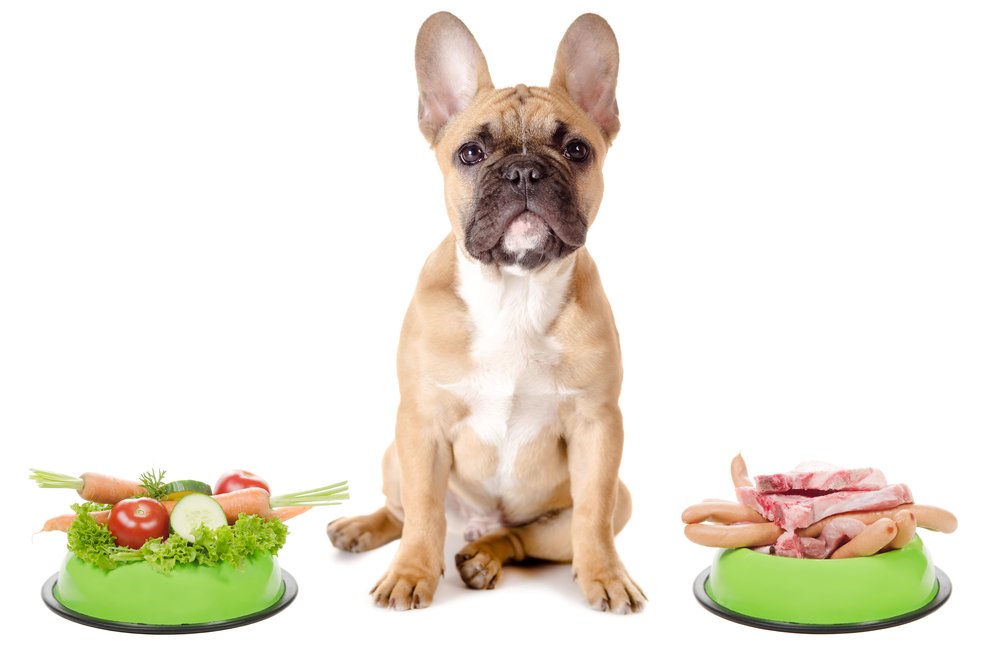Just like humans, dogs need a balanced diet to stay healthy and active. Meeting your dog’s nutritional needs is essential for their overall well-being, energy levels, and longevity. But with so many different types of food available, from kibble to raw diets, it can be tricky to know exactly what your dog requires to thrive. In this guide, we’ll break down the core nutritional requirements for dogs and why each element is important for their health. Core Nutritional Components for Dogs 1. Protein Proteins are the building blocks of your dog’s body, responsible for muscle growth, tissue repair, and overall health. Dogs are omnivores but rely heavily on protein from animal sources (like chicken, beef, or fish). Sources: Chicken, turkey, beef, lamb, fish, and eggs are excellent protein sources. 2. Fats Fats are a critical energy source for dogs, providing more than double the calories per gram compared to proteins or carbohydrates. They are also essential for the absorption of fat-soluble vitamins and contribute to a shiny coat and healthy skin. Sources: Chicken fat, fish oil, flaxseed oil, and animal fats. 3. Carbohydrates While not as critical as proteins and fats, carbohydrates provide a key source of energy and fiber for dogs. Carbs also aid in digestion and are important for gut health. Sources: Whole grains (brown rice, oats), sweet potatoes, peas, and barley. 4. Vitamins Vitamins are crucial for many bodily functions, including immune support, bone development, and maintaining skin and eye health. Vitamins are often present in balanced dog food, but you may need supplements in certain cases (like Vitamin D for dogs who don’t get much sunlight). 5. Minerals Minerals play a role in everything from bone health to nervous system function. Dogs need two types of minerals: How Much They Need: The amount of minerals required varies by dog size, age, and activity level, but they should always be part of a well-rounded diet. 6. Water Though often overlooked, water is the most important nutrient for dogs. It’s essential for nearly all bodily functions, including digestion, temperature regulation, and waste elimination. Special Considerations Life Stage Breed-Specific Needs Some breeds may have specific dietary requirements. For example, large breeds may benefit from foods with added joint support, while small breeds may require calorie-dense foods to keep their energy levels up. Allergies and Sensitivities Some dogs are sensitive to common ingredients like grains, chicken, or dairy. In these cases, grain-free or hypoallergenic dog foods may be necessary to prevent allergic reactions or digestive issues. Conclusion: Balancing Your Dog’s Diet Providing your dog with a balanced and nutritious diet is one of the best ways to ensure they live a long, healthy life. The right balance of protein, fat, carbohydrates, vitamins, and minerals can keep your dog feeling energetic and strong. Remember to always consult with your veterinarian to ensure your dog’s diet meets their unique needs. By following these guidelines and selecting quality dog food that fits your dog’s life stage, breed, and activity level, you can give your furry friend the nutrients they need to thrive!
Dog Food Allergies: Symptoms, Causes, and How to Help Your Dog
As a dog owner, it can be alarming to see your dog suffering from constant itching, digestive issues, or skin problems. These symptoms might be the result of food allergies. Just like humans, dogs can develop allergies to certain ingredients in their food, which can lead to uncomfortable and even painful reactions. Understanding dog food allergies, their symptoms, and how to manage them can help improve your dog’s quality of life. In this guide, we’ll explore the common causes of dog food allergies, how to identify them, and the best steps to take to ensure your dog gets the nutrition they need without the allergic reactions. What Are Dog Food Allergies? Dog food allergies occur when a dog’s immune system reacts negatively to a particular ingredient in their food. Unlike food intolerance, which affects digestion, food allergies trigger an immune response, causing more noticeable symptoms such as skin irritation and itching. Dogs can develop allergies to proteins, grains, or additives in their food. The immune system mistakenly identifies these substances as harmful and attacks them, leading to inflammation and other allergic symptoms. Common Symptoms of Dog Food Allergies The symptoms of food allergies in dogs can vary, but the most common ones include: 1. Itchy Skin One of the primary symptoms of a dog food allergy is excessive itching, particularly around the face, paws, ears, and belly. Dogs with food allergies may scratch, lick, or bite at their skin, leading to redness and sores. 2. Ear Infections Recurrent ear infections are often linked to food allergies. If your dog is constantly shaking their head or scratching their ears, and the infections keep coming back despite treatment, it may be time to investigate their diet. 3. Gastrointestinal Issues Dogs with food allergies may experience digestive problems, including vomiting, diarrhea, or excessive gas. These issues are often a sign that your dog’s body is struggling to process a specific ingredient. 4. Hair Loss and Skin Problems Allergic reactions can cause hair loss, rashes, hives, or scabs on your dog’s skin. Chronic skin infections and dry, flaky skin are also common signs of food allergies. 5. Red, Irritated Eyes Dogs with food allergies may have red, watery, or swollen eyes. In some cases, the irritation can cause dogs to rub their eyes with their paws, making the problem worse. Common Causes of Dog Food Allergies Food allergies in dogs are often triggered by specific proteins or ingredients. Here are some of the most common causes: 1. Animal Proteins The most common cause of food allergies in dogs is proteins. This includes chicken, beef, lamb, and dairy. Some dogs develop sensitivities to specific types of animal proteins, which are often the primary ingredient in many commercial dog foods. 2. Grains While not as common as protein allergies, some dogs can be allergic to grains like wheat, corn, and soy. Grain-free diets have become popular for this reason, offering an alternative to dogs with grain sensitivities. 3. Additives and Preservatives Some dogs may react negatively to artificial additives, colors, or preservatives in their food. These chemicals can trigger allergic reactions, particularly in dogs with sensitive digestive systems. 4. Dairy Lactose intolerance or dairy allergies can cause gastrointestinal upset, including diarrhea and vomiting. Dairy products like cheese and milk can also lead to skin irritations in some dogs. Diagnosing Dog Food Allergies If you suspect your dog has a food allergy, it’s important to get a proper diagnosis. Here’s how to go about identifying and managing food allergies in dogs: 1. Consult Your Veterinarian Your veterinarian will help rule out other causes of the symptoms, such as environmental allergies, parasites, or infections. They may also suggest an elimination diet to determine the allergen. 2. Elimination Diet An elimination diet involves feeding your dog a limited-ingredient diet that contains proteins and carbohydrates they’ve never eaten before. This helps to isolate the allergen. Over time, ingredients are reintroduced one by one until the allergic reaction reappears, identifying the problematic ingredient. 3. Allergy Testing In some cases, your veterinarian may recommend allergy testing through blood tests or skin tests to pinpoint the specific allergens affecting your dog. This can be especially useful if the elimination diet doesn’t provide clear answers. How to Treat and Manage Dog Food Allergies Once the allergen has been identified, managing your dog’s food allergy becomes much easier. Here are some ways to help your dog live allergy-free: 1. Switch to Hypoallergenic Dog Food Hypoallergenic dog food is designed specifically for dogs with food allergies. These formulas typically contain limited ingredients, novel proteins (such as duck, rabbit, or venison), and are free from common allergens like grains or dairy. 2. Try a Homemade Diet For more control over your dog’s diet, consider preparing homemade dog food. This allows you to select the ingredients carefully and ensure that your dog is avoiding any allergens. Just be sure to consult your veterinarian or a pet nutritionist to create a balanced diet that meets all your dog’s nutritional needs. 3. Grain-Free or Limited-Ingredient Diets Grain-free and limited-ingredient diets can also help manage food allergies. Grain-free diets eliminate wheat, corn, and soy, which are common allergens, while limited-ingredient diets focus on simple formulas with fewer ingredients to reduce the risk of triggering an allergic reaction. 4. Introduce New Foods Slowly When trying new foods, introduce them gradually over several days. Start by mixing a small amount of the new food with your dog’s current food, increasing the proportion each day. This slow transition can help prevent digestive upset. 5. Monitor for Symptoms Even after switching your dog’s food, continue to monitor for any signs of allergic reactions. If symptoms persist, consult your veterinarian for further guidance. Conclusion: Giving Your Dog Allergy Relief Food allergies can be frustrating for both you and your dog, but with the right approach, you can find the right diet that keeps your dog healthy and symptom-free. Whether you choose hypoallergenic commercial food, a homemade diet, or a limited-ingredient option, ensuring your dog’s nutritional
How Long Can a Dog Go Without Water?
As a responsible dog owner, you know the importance of keeping your furry companion hydrated. Water is essential for their overall health and well-being, and without it, dogs can quickly face serious health issues. But just how long can a dog go without water before it becomes dangerous? In this article, we’ll explore how long dogs can survive without water, why hydration is critical, and how to prevent dehydration. How Long Can a Dog Go Without Water? On average, dogs can survive without water for 48-72 hours. However, even though they can survive this long, it’s far from ideal. After just 24 hours without water, your dog can start experiencing signs of dehydration, which can lead to severe health complications if not addressed promptly. Ideal Water Access Dogs should ideally have access to fresh and clean water every 6-10 hours. Even short periods of dehydration can impact your dog’s body functions and energy levels. Ensuring they have consistent access to water helps maintain their health and prevent dehydration. Why is Water So Important for Dogs? Water plays a critical role in many of your dog’s bodily functions, including: Without enough water, these functions can be disrupted, leading to dehydration and potentially life-threatening conditions. Signs of Dehydration in Dogs It’s essential to recognize the signs of dehydration early so you can take action before it becomes a severe issue. Common signs include: What Causes Dehydration in Dogs? There are various factors that can lead to dehydration in dogs, including: 1. Limited Access to Water Sometimes, dogs simply don’t have access to water for extended periods, either because they are left alone too long or their water bowl isn’t refilled frequently. 2. Excessive Heat or Activity Hot weather and vigorous exercise can cause dogs to lose water more quickly through panting and sweating from their paw pads. 3. Illness Certain illnesses, like kidney disease, vomiting, or diarrhea, can cause your dog to lose water at a faster rate than normal, leading to dehydration. 4. Refusal to Drink In some cases, dogs may refuse to drink water due to stress, injury, or illness, increasing the risk of dehydration. How to Prevent Dehydration in Dogs Preventing dehydration is much easier than dealing with the consequences of it. Here are some practical tips to keep your dog properly hydrated: 1. Provide Fresh Water Regularly Make sure your dog always has access to clean, fresh water, especially after meals, exercise, or during hot weather. 2. Monitor Water Intake If your dog isn’t drinking enough, try encouraging them to drink by adding water to their food or offering ice cubes as a treat. 3. Use a Spill-Proof Water Bowl For active dogs or during travel, consider using a spill-proof water bowl to ensure they always have access to water. 4. Watch for Signs of Dehydration Keep an eye on your dog’s behavior and physical signs, especially during the summer months or after strenuous activity. 5. Offer Hydrating Foods Incorporating moisture-rich foods like wet dog food, or mixing water with dry kibble, can help ensure your dog gets extra hydration with their meals. What to Do if Your Dog is Dehydrated If you suspect that your dog is dehydrated, the first step is to encourage them to drink small amounts of water. However, if they refuse or if their dehydration seems severe, it’s important to seek veterinary care immediately. Your vet may administer fluids intravenously or under the skin to quickly rehydrate your dog. In severe cases, dehydration can lead to organ damage or failure, so it’s essential to act quickly. Conclusion: Prioritize Hydration for a Healthy Dog While dogs can technically survive without water for 48-72 hours, it’s never a good idea to test this limit. Hydration is vital to your dog’s health, and making sure they have regular access to fresh water is one of the simplest yet most important things you can do as a pet owner. By keeping an eye out for signs of dehydration, providing plenty of water, and adjusting based on your dog’s needs, you can ensure that your dog stays happy, healthy, and well-hydrated for years to come.
Homemade Dog Food: Recipes and Tips for a Healthier Dog
As a dog owner, you know the importance of feeding your furry companion a nutritious, well-balanced diet. With more people becoming concerned about the quality and ingredients in commercial dog food, homemade dog food has become an appealing option. Making your own dog food gives you complete control over the ingredients, ensuring that your dog is getting fresh, healthy meals tailored to their specific needs. In this article, we’ll dive into the world of homemade dog food, provide some easy-to-follow recipes, and offer tips to help you get started on this rewarding journey. 🐕 Why Choose Homemade Dog Food? There are several reasons why pet owners choose to make their own dog food: 🍲 Homemade Dog Food Recipes to Get You Started 1. Simple Chicken and Rice Recipe This recipe is easy to prepare and great for dogs with sensitive stomachs. Ingredients: Instructions: Nutritional Benefits: Chicken provides a lean source of protein, while brown rice is a good source of fiber and helps with digestion. Vegetables offer vitamins and minerals, making this a balanced meal. 2. Beef and Sweet Potato Delight Packed with protein and healthy carbs, this meal will keep your dog energetic and satisfied. Ingredients: Instructions: Nutritional Benefits: Beef provides protein and iron, while sweet potatoes offer a healthy dose of fiber and beta-carotene. Spinach adds vitamins A, C, and K, making this a nutrient-dense meal for your dog. 3. Turkey and Quinoa Power Bowl A protein-packed meal that’s perfect for active dogs. Ingredients: Instructions: Nutritional Benefits: Turkey is a lean source of protein, while quinoa provides a complete protein and essential amino acids. Carrots and broccoli offer vitamins, fiber, and antioxidants. 📝 Tips for Preparing Homemade Dog Food 1. Consult with Your Veterinarian Before transitioning your dog to homemade food, consult with your vet to ensure you’re meeting all your dog’s nutritional requirements. They can help you create a balanced diet plan based on your dog’s breed, size, age, and health. 2. Balance is Key Dogs need a proper balance of protein, carbohydrates, fats, and essential vitamins and minerals. While homemade meals give you control over the ingredients, you need to ensure you’re including the right mix of nutrients. 3. Introduce New Foods Gradually When introducing homemade meals to your dog’s diet, do it gradually to avoid upsetting their stomach. Start by mixing the homemade food with their current kibble and increase the homemade portion over time. 4. Portion Control Ensure you’re feeding the appropriate portions based on your dog’s size, age, and activity level. Overfeeding, even with homemade food, can lead to weight gain and other health issues. 5. Include Essential Supplements Homemade dog food might not always provide all the necessary nutrients your dog needs. Discuss with your vet whether you should add supplements such as calcium, fish oil (for Omega-3), or a multivitamin. ❌ Ingredients to Avoid While homemade dog food is a great option, it’s important to be aware of foods that can be harmful to dogs. Avoid including the following ingredients in your recipes: Stick to ingredients that are safe and nutritious for your pet. 🐶 Benefits of Homemade Dog Food Conclusion: Start Your Homemade Dog Food Journey Making homemade dog food can be an incredibly rewarding way to care for your dog’s health and well-being. By using high-quality ingredients and tailoring meals to your dog’s specific needs, you can provide them with a diet that supports a happy and healthy life. Remember to always consult your vet, balance the nutrients, and avoid harmful ingredients. With a bit of preparation and planning, you can enjoy the benefits of homemade dog food and see the positive impact it has on your furry friend. Ready to get started? Try one of these easy recipes today and give your dog the gift of good health!
How to Get Dog Smell Out of Carpet: A Complete Guide
Owning a dog brings joy, love, and companionship, but it also comes with certain challenges—especially when it comes to keeping your home smelling fresh. Carpets, in particular, tend to absorb pet odors, whether it’s from wet fur, accidents, or just that general “doggy” scent. If you’re dealing with lingering smells in your carpet, don’t worry! With the right approach, you can easily eliminate dog odors and restore freshness to your home. In this article, we’ll explore simple yet effective methods to get dog smell out of your carpet. From DIY solutions to commercial cleaners, we’ll guide you step by step. 🐕 Why Does Carpet Hold Dog Odors? Before jumping into solutions, it’s important to understand why your carpet holds onto dog smells. Carpets are made of fibers that can trap moisture, oils, and dirt. When dogs lay on the carpet, their fur, body oils, and sweat seep into the fibers. If they have an accident, urine can penetrate deep into the padding, making it even harder to get rid of the smell. Additionally, dogs sometimes bring in outdoor debris and odors, further contributing to that musty scent. But don’t worry—there are plenty of ways to tackle these smells! 🧼 Step-by-Step Guide to Removing Dog Smells from Carpet 1. Start by Vacuuming Thoroughly The first step to getting rid of any odor is removing as much pet hair, dirt, and dander as possible. Use a vacuum cleaner with a high-quality filter (such as a HEPA filter) to ensure you’re getting deep into the carpet fibers. 2. Use Baking Soda to Neutralize Odors Baking soda is one of the best natural odor neutralizers and can work wonders on dog smells. Here’s how to use it: This method should significantly reduce or even eliminate mild odors. 3. Try a Vinegar and Water Solution Vinegar is another natural cleaning agent that can break down and neutralize pet odors. It’s safe for most carpets and effective at removing dog smells. Vinegar’s smell may be strong initially, but it will fade once dry, taking the dog odor with it. 4. Use an Enzymatic Cleaner for Strong Odors If you’re dealing with strong, persistent smells—such as those caused by urine—an enzymatic cleaner is your best bet. These cleaners contain enzymes that break down the organic compounds causing the odors, making them particularly effective for pet accidents. Enzymatic cleaners can often take care of even the most stubborn pet smells. 5. Steam Clean for a Deep Clean For a more thorough cleaning, steam cleaning your carpet can help remove not only dog odors but also dirt and bacteria trapped deep in the fibers. Steam cleaning will leave your carpet fresh, clean, and odor-free. 6. Tackle Pet Stains Quickly If your dog has an accident on the carpet, addressing it right away can prevent lingering smells from setting in. 🧴 Commercial Pet Odor Eliminators If natural solutions aren’t doing the trick, you may want to consider a commercial pet odor eliminator. Look for products designed specifically for pet smells, such as: These products are formulated to neutralize tough odors and are safe for use around pets. 🐾 Preventing Dog Smells in the Future Once you’ve successfully removed the dog smell from your carpet, there are steps you can take to prevent it from returning: Conclusion: Fresh Carpet, Happy Home Dealing with dog smells in your carpet can be frustrating, but with the right techniques, you can eliminate even the most stubborn odors. Whether you choose natural solutions like baking soda and vinegar or opt for a more powerful enzymatic cleaner, keeping your carpets fresh is achievable. With a little time and effort, you’ll have a clean, odor-free home that you and your dog can enjoy. Got stubborn odors that won’t go away? Try these tips and enjoy a fresher, cleaner home today!
Best Dog Food for Poodles: A Comprehensive Guide
Poodles are known for their intelligence, elegant appearance, and playful nature. But to keep your Poodle healthy and thriving, proper nutrition is key. Whether you have a Standard, Miniature, or Toy Poodle, their diet plays a huge role in maintaining their energy levels, coat health, and overall well-being. In this guide, we’ll explore the best dog food for Poodles, covering: Let’s dive in and find the perfect food to keep your Poodle healthy and happy! 🐩 Understanding the Nutritional Needs of Poodles Poodles come in three sizes—Standard, Miniature, and Toy—and while their size may vary, their nutritional needs remain largely the same. However, some factors like age, activity level, and health conditions should be taken into account when selecting the right food. 1. Protein for Muscle Maintenance Poodles are an active and energetic breed, so they need high-quality protein to build and maintain lean muscle. Look for foods that list animal-based proteins (chicken, beef, or fish) as the primary ingredient. Protein supports muscle mass, energy, and immune function, which are essential for Poodles of all sizes. 2. Healthy Fats for Skin and Coat Health Poodles are known for their distinctive curly coats, which can be prone to dryness or dullness. Healthy fats, especially Omega-3 and Omega-6 fatty acids from sources like fish oil, flaxseed, and chicken fat, are vital for maintaining a shiny coat and healthy skin. 3. Carbohydrates for Energy Carbohydrates provide the necessary energy to fuel your Poodle’s playful and active lifestyle. Whole grains like brown rice, oats, and barley are great sources of carbohydrates, as they offer sustained energy and fiber for healthy digestion. For Poodles with grain sensitivities, you can opt for grain-free options that use ingredients like sweet potatoes or peas as alternative carbohydrate sources. 4. Vitamins and Minerals for Overall Health To keep your Poodle in top condition, ensure their food is rich in essential vitamins and minerals. Look for foods fortified with: 🥩 Key Ingredients to Look for in Poodle Food When selecting the best food for your Poodle, it’s essential to read the ingredient list carefully. The following ingredients should be a part of any high-quality dog food for Poodles: Avoid foods with unnecessary fillers like corn, soy, or artificial preservatives, as these can contribute to allergies or sensitivities in some Poodles. ⚖️ Best Dog Food for Poodles by Life Stage Your Poodle’s dietary needs will change as they grow from a puppy to an adult and eventually a senior. Let’s explore the best food options for each life stage. 🐕🦺 Puppy Poodles Poodle puppies are full of energy and need a nutrient-dense food to support their rapid growth. Puppy formulas are higher in protein and fat to fuel their development. Top Pick for Poodle Puppies: 🐩 Adult Poodles As your Poodle reaches adulthood, it’s important to transition them to a balanced diet that maintains their lean muscle and supports joint health. Top Pick for Adult Poodles: 👵 Senior Poodles As Poodles age, their metabolism slows, and they may become less active. Senior formulas should be lower in calories and fat, with added joint support to keep them mobile. Top Pick for Senior Poodles: 🐾 Special Dietary Considerations for Poodles Poodles are generally healthy dogs, but they can be prone to specific health issues that may require dietary adjustments. Here are some common problems and the best foods to address them: 1. Allergies and Sensitivities Poodles can sometimes develop food allergies, especially to grains or certain proteins like chicken. If your Poodle shows signs of allergies (itchy skin, digestive upset), consider a limited ingredient diet that avoids common allergens. Recommended Food: 2. Joint Problems Standard Poodles, in particular, are prone to joint problems like hip dysplasia. Choosing food rich in glucosamine and chondroitin can help support joint health and reduce discomfort. Recommended Food: 3. Weight Management Poodles, especially Standard Poodles, can become overweight if not fed properly. For overweight Poodles, a low-calorie, high-protein diet can help them lose weight while maintaining muscle mass. Recommended Food: Conclusion: Keep Your Poodle Thriving with the Right Food Choosing the best food for your Poodle involves understanding their unique nutritional needs and finding a formula that fits their size, age, and any special health considerations. Whether your Poodle is a playful puppy, a spirited adult, or a dignified senior, the right diet can help them stay healthy, happy, and full of life.
Labrador Retriever Food: Choosing the Perfect Chow
Is your Labrador Retriever looking a little less energetic than usual? 🐕🦺 As dog owners, we know how much a healthy, happy dog means to us. For Labrador Retrievers, one of the most beloved and active dog breeds, the right nutrition plays a vital role in their well-being. The right food can make all the difference, whether your Lab is a bouncy puppy or a senior who’s slowed down a bit. In this guide, we’ll dive into the key aspects of choosing the perfect food for your Lab. You’ll learn about: Let’s break it down step by step to help you give your furry friend the gift of good health with the perfect chow! 💪 Why the Right Food Matters for Your Lab’s Health Labrador Retrievers are known for their playful and energetic nature. However, they are also prone to health issues such as obesity, joint problems, and allergies, especially as they age. Feeding your Lab the right food ensures they get the proper nutrition to maintain a healthy weight, build strong muscles, and keep their immune system in top shape. Common Health Concerns in Labs Some key health issues to keep in mind when choosing food for your Labrador include: ⚖️ Factors to Consider When Choosing Your Lab’s Food Not all dog foods are created equal, especially when it comes to specific breeds like Labs. Here are the main factors to consider when selecting the perfect chow for your Lab: 1. Protein Level Protein is the foundation of any dog’s diet, helping maintain muscle mass and providing energy. For an active breed like the Labrador, look for food that has high-quality animal-based protein as its primary ingredient, such as chicken, beef, or fish. 2. Grain or Grain-Free? Many owners wonder whether they should feed their Labrador a grain-free diet. Grains like rice and barley can be part of a balanced diet, providing carbohydrates for energy. However, some Labs may be sensitive to grains, leading to digestive issues or skin problems. If your Lab has shown signs of food allergies, a grain-free option with limited ingredients could be beneficial. Just make sure to consult with your vet before making a switch. 3. Healthy Fats Fat is another crucial part of your Lab’s diet. Healthy fats, like those from fish oil or chicken fat, support a shiny coat, skin health, and overall energy. However, too much fat can contribute to obesity, so balance is key. Look for dog food with about 10-15% fat content for adult dogs and higher fat content for puppies, around 20%. 4. Joint and Bone Support Labradors are prone to joint issues, so it’s essential to choose food that supports joint health. Look for ingredients like glucosamine and chondroitin, which help maintain cartilage health and prevent joint pain. 5. Fiber Content Labs can benefit from dog food with moderate fiber content to aid digestion and keep them feeling full, helping control weight. Foods with 3-6% fiber are typically a good balance. 🥣 Transitioning Your Lab to a New Food Smoothly Once you’ve selected the right food for your Lab, it’s crucial to transition them to the new diet gradually. Sudden changes can upset their stomach, causing digestive issues like vomiting or diarrhea. Here’s how to make the switch smoothly: Conclusion: Give Your Lab the Gift of Good Health with the Right Food Choosing the best food for your Labrador Retriever is one of the most important things you can do to ensure their long-term health and happiness. By considering their unique needs—whether it’s maintaining a healthy weight, avoiding food sensitivities, or supporting joint health—you can make a decision that benefits their well-being. Want to know more? Check out the full article for a deeper dive into the best foods for Labrador Retrievers and tips to keep your furry friend in top shape!
How Many Litters Can A Dog Have In Her Life?
The reproduction and breeding of dogs are fascinating topics that often raise important questions for both pet owners and breeders. One of the most frequently asked questions is, “How many litters can a dog have in her lifetime?” The answer to this question depends on several factors, including the dog’s breed, health, age, and the practices of the breeder. In this comprehensive guide, we will explore the many factors that influence how many litters a dog can safely have, the importance of responsible breeding, and the health considerations for both the mother and her puppies. Understanding a Dog’s Reproductive Cycle Before diving into the number of litters a dog can have, it’s essential to understand the canine reproductive cycle. Female dogs, or bitches, generally go into heat, or estrus, for the first time between the ages of 6 and 12 months, depending on the breed and size. Smaller breeds tend to mature faster, while larger breeds may take longer to reach sexual maturity. Dogs usually go into heat twice a year, or roughly every 6 months. During this period, they are fertile and capable of conceiving if they mate. The length of time a dog stays in heat typically lasts about 2 to 3 weeks, but the fertile window, where conception is most likely, usually lasts for around 5-9 days. Breeding Age and Frequency For responsible breeders, the breeding age and frequency play a critical role in determining how many litters a dog can have. While a dog might be capable of conceiving during each heat cycle, it is not advisable or healthy for a dog to breed during every cycle. How Many Litters Can a Dog Have? So, how many litters can a dog have in her lifetime? Theoretically, since a dog can go into heat twice a year and can breed during each heat cycle, she could have 2 litters per year. Over a lifespan of reproductive capability, from about 2 to 6 years old, a dog could have up to 10 litters. However, this is not recommended from a health standpoint. Continuous breeding without adequate time for recovery can significantly impact a dog’s physical and mental well-being. Many responsible breeders follow guidelines that limit the number of litters to 3 to 4 throughout a dog’s lifetime to ensure her health is not compromised. Factors That Influence the Number of Litters a Dog Can Have Several factors can influence how many litters a dog can have, and responsible breeders take all of these into account to prioritize the health of the dog: The Importance of Responsible Breeding The number of litters a dog can have is closely tied to responsible breeding practices. Ethical breeders prioritize the health and well-being of both the mother and the puppies over profit. Here’s why responsible breeding is critical: 1. Health of the Mother Overbreeding can cause physical and mental exhaustion for the mother dog, which may result in complications during pregnancy, delivery, and nursing. Breeding too frequently can also weaken the immune system, increase the risk of infections, and shorten the dog’s lifespan. 2. Health of the Puppies Puppies born from overbred or unhealthy mothers may suffer from health problems, such as weakened immune systems, inherited genetic disorders, or developmental issues. Ensuring that the mother is in excellent health before, during, and after pregnancy is key to producing healthy litters. 3. Population Control Overbreeding can contribute to the issue of pet overpopulation. Every year, millions of dogs end up in shelters due to irresponsible breeding practices. By limiting the number of litters a dog has and ensuring that each litter has homes waiting for them, breeders can help mitigate the overpopulation crisis. 4. Temperament and Behavior Stress and fatigue from continuous pregnancies can negatively affect a dog’s temperament. A dog that is bred too often may become more anxious, aggressive, or withdrawn. Responsible breeders ensure that their dogs have time to rest and recuperate, maintaining a healthy, balanced temperament. Conclusion: How Many Litters Should a Dog Have? While a dog could theoretically have up to 10 litters in her lifetime, it is neither recommended nor ethical to allow that many pregnancies. For the sake of her health and well-being, it’s best to limit the number of litters to 3 to 4 over her reproductive years. Always ensure the dog has adequate time to recover between litters and consult with a veterinarian regularly. At the end of the day, the well-being of the dog and the puppies should be the top priority for any breeder or pet owner. By adhering to responsible breeding practices, you ensure that your dog remains healthy, happy, and well-cared for, while also contributing to the future health of the breed.
Can Puppies Safely Eat Adult Dog Food?
Picture this: Your puppy, with those big, curious eyes, is nosing around the food bowl of your older dog. Maybe they even grab a few bites of the bigger dog’s food! As adorable as it seems, you might wonder, Can puppies safely eat adult dog food? After all, it’s all dog food, right? While an occasional nibble may not seem like a big deal, there are important reasons why puppies need a diet specifically tailored to their needs. In this blog post, we’ll break down why feeding adult dog food to puppies isn’t a great idea, how puppies’ nutritional needs differ, and what could happen if your puppy consistently eats food meant for adult dogs. Understanding the Nutritional Needs of Puppies vs. Adult Dogs Puppies are in a stage of rapid growth and development. Their bones, muscles, organs, and immune systems are all still forming, which means they need a nutrient-rich diet. While adult dog food is designed to maintain a dog’s health, puppy food is specially formulated to support their growth and development. 1. Higher Calorie Requirements Puppies are bundles of energy, constantly playing, exploring, and learning about the world around them. This high energy expenditure means they need more calories than adult dogs. Puppy food typically contains more calories per serving to support their energy needs without overloading their small stomachs. 2. Protein: The Building Block of Growth Protein is essential for the development of muscles, tissues, and organs in puppies. Puppy food contains higher levels of protein to fuel this rapid growth phase. Adult dogs don’t need as much protein, so adult dog food contains less. 3. Calcium and Phosphorus: Bone and Teeth Development Calcium and phosphorus are crucial for the development of strong bones and teeth in puppies. Puppy food has the right balance of these minerals to support skeletal growth. In contrast, adult dog food contains lower levels, as adult dogs’ bones are already fully developed. 4. Fat: Fuel for Growth Puppies need a higher fat content in their diet compared to adult dogs. Fat provides a concentrated source of energy that’s easy to digest and essential for brain development and a healthy coat. 5. Vitamins and Minerals Puppy food is fortified with vitamins and minerals essential for proper development. For example, DHA (docosahexaenoic acid), an omega-3 fatty acid, is important for brain and eye development in puppies. Adult dog food, on the other hand, might not have these in the quantities puppies need. Occasional Bites: Is it Harmful? So, if your puppy sneaks a few bites of adult dog food now and then, is it harmful? In small amounts, it’s usually not something to worry about. But if your puppy regularly eats adult dog food, it can lead to long-term health issues and developmental delays. It’s also worth noting that feeding a puppy a diet primarily made up of adult dog food can be dangerous over time. While you might not notice the effects right away, over months or years, your dog may experience health problems due to nutritional deficiencies. What Can Happen if Puppies Consistently Eat Adult Dog Food? If your puppy consistently eats adult dog food, it could lead to several issues: 1. Stunted Growth As mentioned earlier, puppies need the right balance of nutrients, including protein, calcium, and fat. Without these, their growth can be affected, leading to a smaller, weaker adult dog. 2. Weaker Immune System Puppy food contains nutrients like antioxidants and DHA, which are essential for developing a strong immune system. A diet lacking in these nutrients could make your puppy more susceptible to illnesses and infections. 3. Increased Risk of Obesity Interestingly, if puppies eat adult dog food, they may become overweight. How? Since they aren’t getting enough calories and nutrients from their food, they might overeat to compensate. This can lead to excessive weight gain, which brings its own set of health problems, like joint issues and heart disease. 4. Behavioral Issues Nutritional deficiencies can also affect your puppy’s brain development, leading to learning difficulties and behavioral problems. Puppies on an improper diet may be more anxious, less responsive to training, or struggle to learn commands. 5. Long-term Health Problems Over time, a puppy that eats adult dog food may develop long-term health issues like joint problems, poor muscle development, or digestive issues. These problems may not show up right away, but they can affect your dog’s health as they grow into adulthood. How Long Should Puppies Eat Puppy Food? Puppies should stay on puppy food until they reach about 80% of their expected adult size, which is typically around 12 months for most breeds. However, large and giant breed dogs, such as Great Danes or Mastiffs, may need to stay on puppy food until they are around 18-24 months old. If you’re unsure when to transition your puppy to adult dog food, consult your veterinarian for advice tailored to your puppy’s specific needs. Conclusion: Stick to Puppy Food for the Best Start To sum up, can puppies safely eat adult dog food? An occasional nibble likely won’t harm them, but regularly feeding adult dog food to a puppy can lead to nutritional imbalances and long-term health problems. Puppies have unique dietary needs that adult dog food just doesn’t meet. To give your puppy the best start in life, stick to high-quality puppy food until they’re ready for the transition to adult dog food. Always check with your vet to ensure that your puppy’s diet is meeting their nutritional needs, and keep the older dog’s food out of reach to prevent any accidental snacking! By choosing the right food for your growing pup, you’re setting them up for a long, healthy, and happy life!
Best Dog Food for French Bulldogs
Introduction With their adorable wrinkles, bat ears, and playful personalities, French Bulldogs steal hearts wherever they go. But beneath that irresistible exterior lies a breed with unique dietary needs. Understanding these needs is essential to ensuring your Frenchie lives a long, healthy, and happy life. Generic dog food won’t cut it! This guide will dive into the specifics of nourishing your Frenchie, from choosing the ideal puppy food to addressing common food allergies and ensuring a complete diet at every life stage. The Nutritional Needs of French Bulldogs French Bulldogs aren’t just miniature versions of other breeds. Their distinctive features come with specific dietary considerations: Brachycephalic Challenges: Frenchies often suffer from Brachycephalic Obstructive Airway Syndrome (BOAS). Their shortened faces cause difficulty breathing, which puts extra stress on the body. Proper diet plays a crucial role in maintaining a healthy weight and avoiding added difficulties when eating or digesting. Allergy-Prone: Allergies are prevalent in French Bulldogs, causing itchy skin, ear infections, and digestive distress. A tailored diet focusing on avoiding allergens and maintaining healthy gut function can provide immense relief. Macronutrient Needs: Like all dogs, Frenchies require the right balance of protein, fats, and carbohydrates for energy, body function, and a shiny coat. However, breed-specific factors need extra attention: High-Quality Protein: Lean protein supports muscle development and immune health. Ensure meat sources are top of the ingredient list. Moderated Fats: Fats are essential, but Frenchies are prone to obesity. Choosing foods with appropriate fat content for their life stage and activity level is vital. Digestible Carbohydrates: Select formulas with easy-to-digest carbs (from whole grains or limited-ingredient recipes) to minimize intestinal strain. Key Nutritional Notes: Vitamins and Minerals: Your Frenchie needs a range of vitamins and minerals critical for bone health, vision, and immune function. Food Size: Opt for food with bite-size kibble to accommodate French Bulldog jaws and reduce choking risk. Choosing the Right Food at Each Stage A French Bulldog’s nutritional needs evolve throughout their lifetime. It’s essential to select age-appropriate foods to support healthy development, manage weight, and address potential health challenges associated with each phase of life. The Growth Phase: Fueling Your Frenchie Puppy During their first year, French Bulldog puppies need a diet specifically formulated for growth and development. These crucial dietary requirements include: Higher Protein: Supports tissue development and proper muscle formation crucial for this breed. Calcium and Phosphorus: Look for precise levels to maintain healthy bone growth, as Frenchies can be prone to skeletal issues. DHA and EPA: Fatty acids that promote brain and visual development. Smaller Kibble Size: Accommodates smaller mouths and facilitates proper chewing. Adult Wellness: Optimizing the Prime Years As your Frenchie matures, transition them to an adult formula designed for maintenance. Key things to focus on for this stage: Allergy Management: If your Frenchie suffers from sensitivities, seek out limited-ingredient or hydrolyzed protein formulas. Weight Control: Many Frenchies have a tendency to gain weight. Opt for foods with moderate fat content and ingredients promoting fullness. Prebiotics & Probiotics: Supports healthy gut function for overall immune strength and digestion. Senior Support: Tailored Nutrition for Golden Years As your Frenchie ages, specific senior formulas or carefully chosen adult versions become increasingly important. Focus on: Increased Protein: Older dogs need more protein to combat muscle loss. Joint Support: Glucosamine and chondroitin help maintain mobility. L-Carnitine: Provides support for healthy weight management in less active seniors. Antioxidants & Fiber: Boost immunity and regulate digestion. Important Note: It’s always advisable to discuss food choices with your veterinarian, especially if your Frenchie has any health conditions or is a particularly picky eater. Top Food Picks for French Bulldogs Choosing the best food for your Frenchie might feel daunting, with such a vast array of options. Here’s a carefully selected collection of high-quality brands that meet the nutritional criteria French Bulldogs need, along with additional factors to consider: Important Note: These picks serve as a guide. Consider your dog’s age, activity, sensitivities, and your veterinarian’s guidance when making a final selection. Best Overall: Brand 1: (Highlight emphasis on breed-specific considerations within their formulas, high-quality ingredients, and if known for addressing Frenchie concerns). Brand 2: (Emphasize limited-ingredient recipes or novel protein options appealing for allergy-prone Frenchies). Budget-Friendly Options: Brand 3: (Highlight value without sacrificing quality in ingredients, suitable for healthy Frenchies who don’t have severe sensitivities). Brand 4: (Known for providing a solid balance of price and nutrients). Specialty Focus: Brand 5: (If a raw or fresh food brand with strong vet backing – emphasize nutritional completeness and safety standards). Brand 6: (Focus on grain-free formulas popular with Frenchie owners aiming to manage potential intolerances). Finding Your Frenchie’s Perfect Match Selecting the right food goes beyond choosing one off this list. Here are some key tips: Read Ingredient Labels: Avoid vague wording and look for real meat as the first ingredient. Steer clear of artificial fillers and by-products. Life Stage Match: Ensure it corresponds to your Frenchie’s age (puppy, adult, senior) for precise nutritional support. Ask Your Vet: They know your Frenchie’s individual health and can offer the most personalized guidance. Beyond the Bag While dry and wet commercial foods form the basis of most Frenchie diets, there are alternative options worth exploring. These choices often offer additional benefits but do require extra care or specialized knowledge. Fresh Food Diets Pre-portioned or subscription-based fresh food for dogs is increasing in popularity. Their benefits and considerations include: High Palatability: Often more appealing to picky eaters or pups recovering from health issues. Fresh Ingredients: Focus on whole foods providing highly digestible nutrients. Price and Storage: Usually require refrigeration and come with a higher price tag. Nutritional Balance: May need supplementation – always consult a vet when switching to primarily fresh food. Raw or Homemade Diets A growing trend among some owners, but one that requires great caution: Potential Benefits: Advocates promote better digestion, shinier coats, and allergy control. Risks: Nutrient imbalances, contamination with bacteria, and injuries when mishandling bones. Veterinary Oversight: Absolutely essential – a veterinary nutritionist must design and
